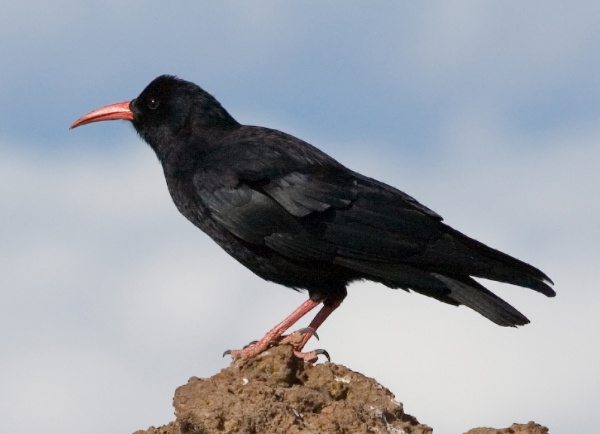Facts About Red-billed chough
The red-billed chough, often referred to as the Cornish chough or simply chough, is a striking member of the crow family and one of only two species in the Pyrrhocorax genus. There are eight subspecies of this bird, which inhabit a variety of environments ranging from the mountains and coastal cliffs of Ireland and Britain to regions in Central Asia, India, and China.
Distinguished by its glossy black feathers, long curved red bill, red legs, and distinctive loud call, the red-billed chough is easy to recognize. These birds are noted for their lifelong pair bonds and loyalty to their breeding sites, typically caves or crevices on cliff faces. They build nests from sticks lined with wool and generally lay three eggs. Their diet primarily consists of invertebrates, which they forage for in short, grazed grasslands.
The taxonomy of the red-billed chough dates back to Carl Linnaeus. Its name derives from Greek words meaning "flame-colored raven." Over time, the bird’s common name evolved from being associated with the jackdaw to specifically signify the red-billed species. Interestingly, the red-billed chough has appeared on postage stamps in various countries.
Comprehensive information is available about the red-billed chough's subspecies, distribution, habitat, behavior, and ecology. This includes details on their breeding habits, nesting behaviors, diet, and natural threats such as predation and parasitism. Although its global population remains stable, the red-billed chough has faced challenges in Europe due to changes in farming practices, persecution, and habitat loss.
To address these issues, conservation efforts have been initiated in places like Spain, Great Britain, and Jersey. In Jersey, for instance, conservationists have implemented captive breeding and release programs to reintroduce the chough to areas where it had become extinct.

 Serbia
Serbia